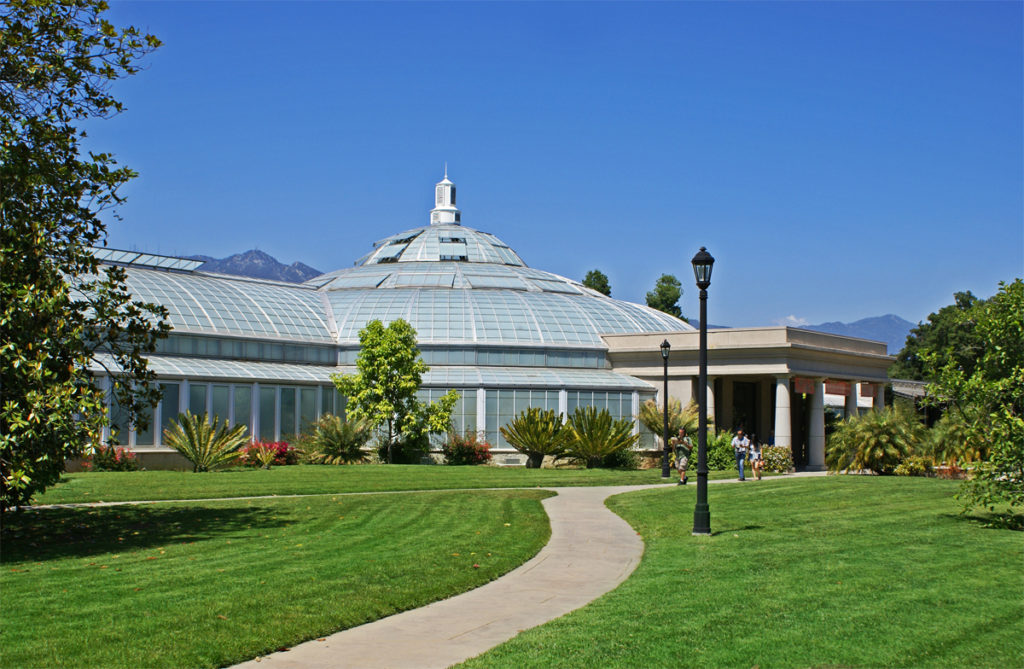Experience a rain forest in the Huntington Library Conservatory
An Interactive Science Center
The Rose Hills Foundation Conservatory for Botanical Science houses interactive exhibits designed to engage children and families in a wonder-filled scientific exploration of plants. Living plants fill a 16,000 square-foot greenhouse that comprises three different habitats (a lowland tropical rain forest, a cloud forest, and a carnivorous plant bog) and a plant lab devoted to experiment stations focusing on the parts of plants.
Fifty interactive exhibits in four galleries offer a rare opportunity to study plants from all over the world. In the Rotunda look through the small silver kaleidoscopes posted near the entrance for an unusual view of the tropical rain forest. Next, stop by the information desk to pick up a map of the Conservatory. In the rain forest look for Amorphophallus titanum, one of the world’s most unusual plants. When blooming, its strong odor earned it the nickname “stinky plant.”
Rain Forest
This warm, wet tropical environment contains rare and unusual palms, the Amorphophallus titanum (The Huntington’s infamous “Corpse Flower,” that blooms on rare occasions), and a pond featuring giant Amazon water lilies. Using technology from the Jet Propulsion Laboratory, visitors can move a climate sensor pod up and down in the overhead canopy of trees, comparing light levels, humidity, and temperature in different layers of the forest. Another exhibit, “Rain Forest Spices” encourages visitors to smell popular spices from the rain forest (such as vanilla), and match them with the plants they come from (an orchid).
Cloud Forest
Cool, misty mountaintops in the tropics are often home to cloud forests. This habitat includes trees draped in orchids, ferns, and bromeliads, as well as unusual and beautiful tropical pitcher plants. Many of the plants found in cloud forests live with their roots in the air. Called epiphytes, they get water right from the clouds, so they can grow on trees, rocks, and even power lines.
Carnivorous Plant Bog
This habitat displays some of The Huntington’s most unusual American plants: Venus flytraps, American pitcher plants, sundews, and sphagnum moss from the coastal bogs of the Carolinas, Georgia, and Florida. In the wetlands of the Bog Gallery visitors can use magnifying lenses to see insects caught by such carnivorous plants as Venus flytraps, pitcher plants, and butterworts.

Plant Lab
The Plant Lab offers an entertaining, hands-on introduction to botany, including a plant petting zoo. Exhibits are organized into six different groups: roots, stems, leaves, flowers, seeds, and spores. Visitors can design a leaf quilt using a variety of leaves and learn how to use scientific instruments including a refractometer, which measures the percentage of sugar in different nectars.

